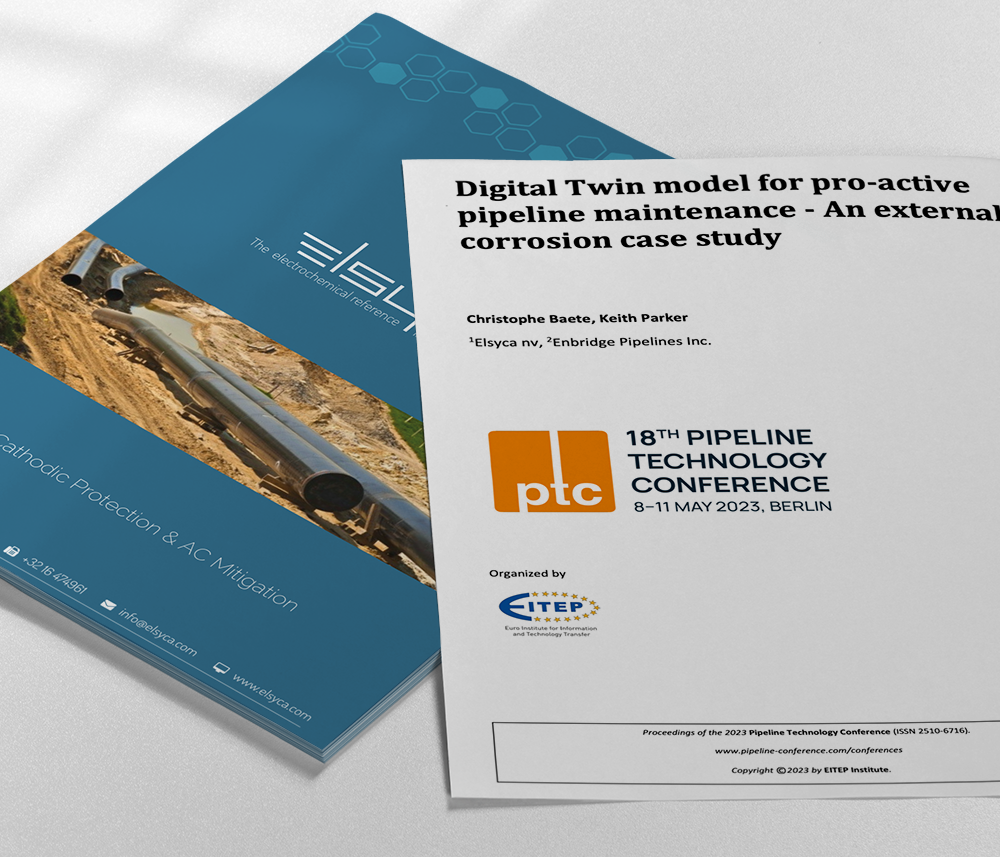
Digital Twin model for pro-active pipeline maintenance - An external corrosion case study (PTC 2023)
PTC 2023 Conference Paper

Digital Twin model for pro-active pipeline maintenance - An external corrosion case study
Christophe Baete, Elsyca NV.; Keith Parker, Enbridge Pipelines Inc.
Paper presented at the 18th Pipeline Technology Conference, Berlin, Germany, May 2023.
ABSTRACT
A digital twin model was deployed for a significant part of the pipeline network with the objective to assess, monitor and improve the external corrosion prevention program. Pipeline properties, survey data, soil maps, ILI data were used to construct and calibrate the digital twin model of the network. Third party systems such as high-voltage power lines pipeline crossings were included as well. Historical data were utilized to run the models for the different operational conditions that occurred in the past with the objective to identify the events that adversely affect pipeline's corrosion integrity. Besides pipe-to-soil potentials more advanced calculations such as corrosion rates and metal loss are a result of the digital twin. The digital twin model was also used to identify the critical rectifiers, test stations and mitigation systems by performing whatif studies followed by a validation campaign in the field. Corrective measures and monitoring strategies were proposed through modelling prior to implementation which ultimately led to reduction in operational costs on a short term and pipeline repairs on the long term.
A case study is presented on an existing pipeline corridor in co-location with high voltage power lines. Simulated corrosion risks are compared with ILI data and dig reports.
